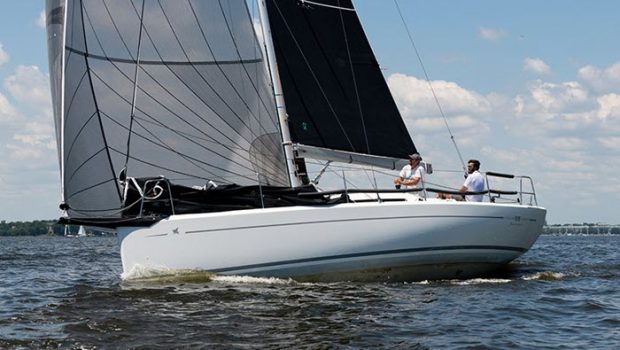David Flynn: Trimming on a Reach
Published on May 4th, 2022
by David Flynn, Quantum Annapolis
Volumes have been written about trim and technique to optimize performance straight upwind and downwind. It’s the nature of our predominantly windward-leeward racing world. Far less is written about reaching angles.
I had a lot of time to think about this a few weeks ago, about 85 miles of thought to be precise, as we jib-reached across the Gulf Stream on our way towards the Bahamas. The boat was Meridian XI, a Carkeek 40 owned by Sled Shelhorse, based in Hampton, VA, and well known on the Chesapeake.
It was pretty windy (high teens). The waves, as is usually the case in the stream, were significant, and we were hammering along at a good clip. Nothing to it, right? Just let the sails out till they luff and trim them in. This is a time honored technique when you are fortunate enough to be able to aim at the mark and go in a straight line, a feature of many a distance race.
Not much to see here, or is there? It is true that it is much harder to make the big gains found upwind or down, but there are boat lengths and precious time to be gained with subtle technique and constant work. Here are a few thoughts to help as you prepare for your next distance race.
Which Sail?
This is a function of exactly what reaching angle you are sailing, wind speed, and what sails you have in your inventory.
On a modern, fractional-rigged boat with relatively small, non-overlapping jibs, angles greater than 70 degrees true wind angle (TWA) quickly find the boat underpowered unless there are more than 10-12 knots. Boats with overlapping genoas are much better in the wind range but will struggle as the TWA approaches 90. If the breeze is up in the teens, the angles at which a jib works will be much broader.
On our romp across the stream our 70 degrees TWA was perfect. We could not have carried more sail. In under 12, though, 70-90 TWA is typically no man’s land. You can’t quite carry a spinnaker; you’re under-powered with a jib. The only option is to sail higher or lower than your desired course. This is the range of angles where the latest generation of specialty reaching sails is the weapon of choice. – Full report









 We’ll keep your information safe.
We’ll keep your information safe.